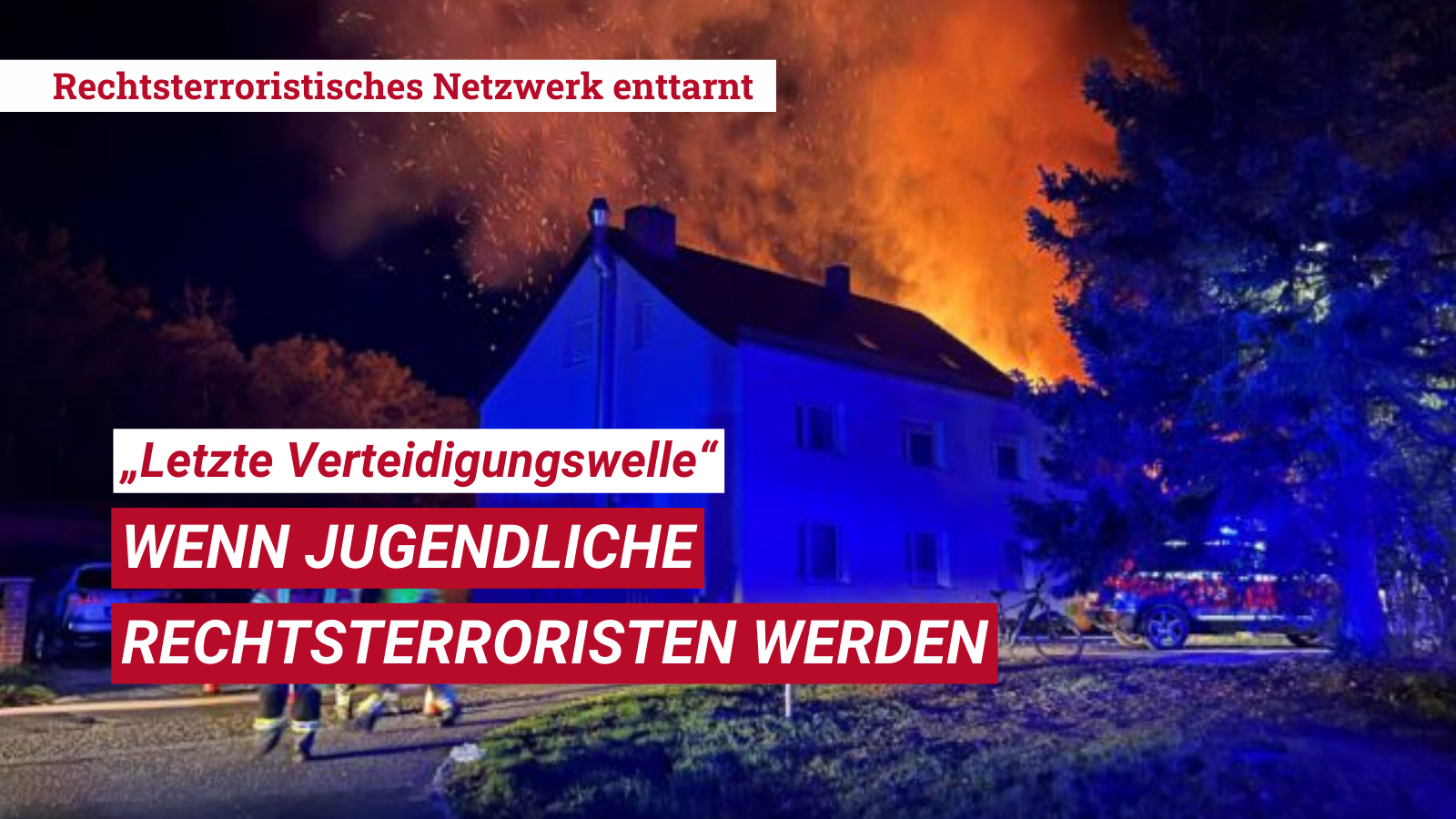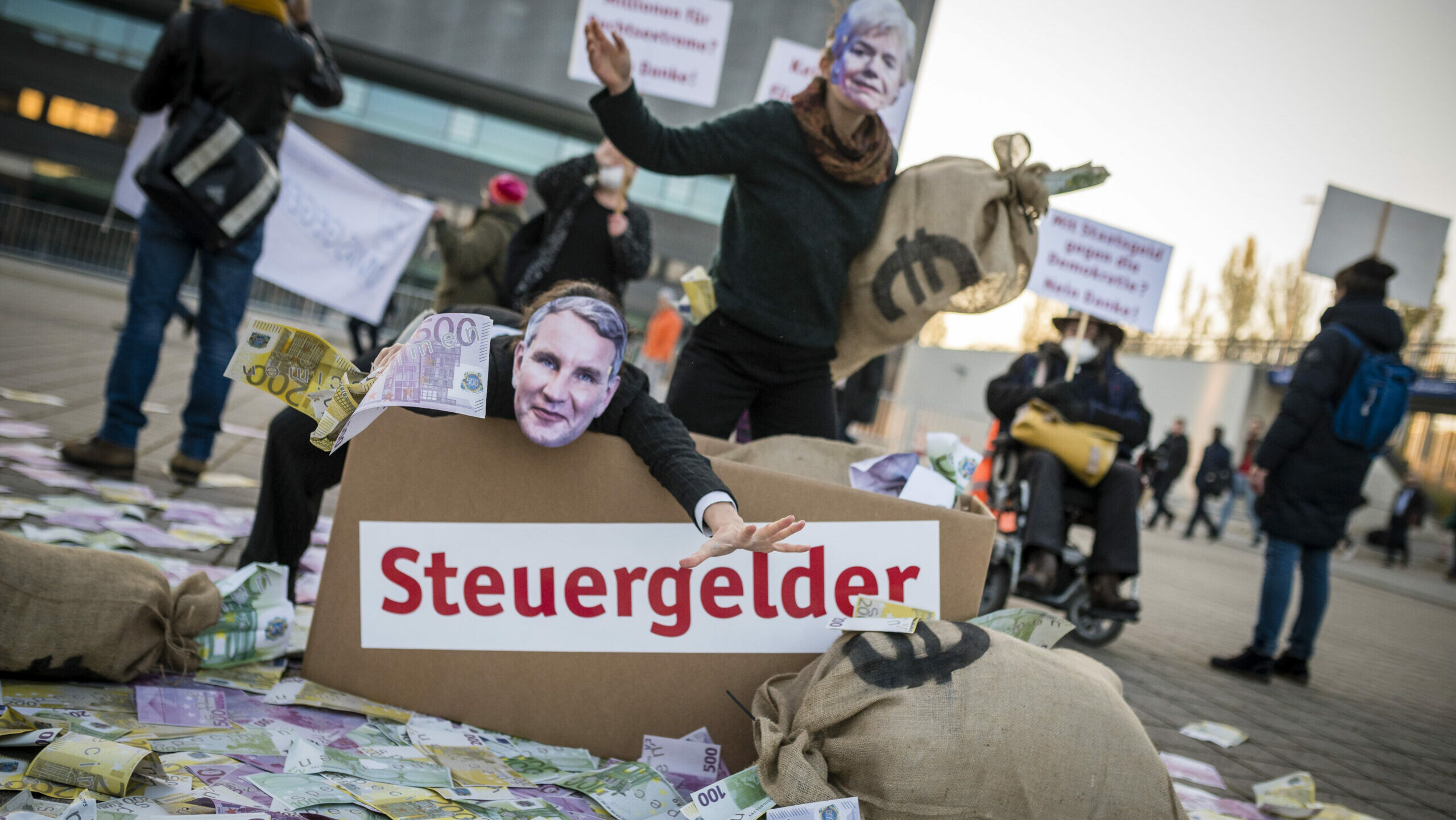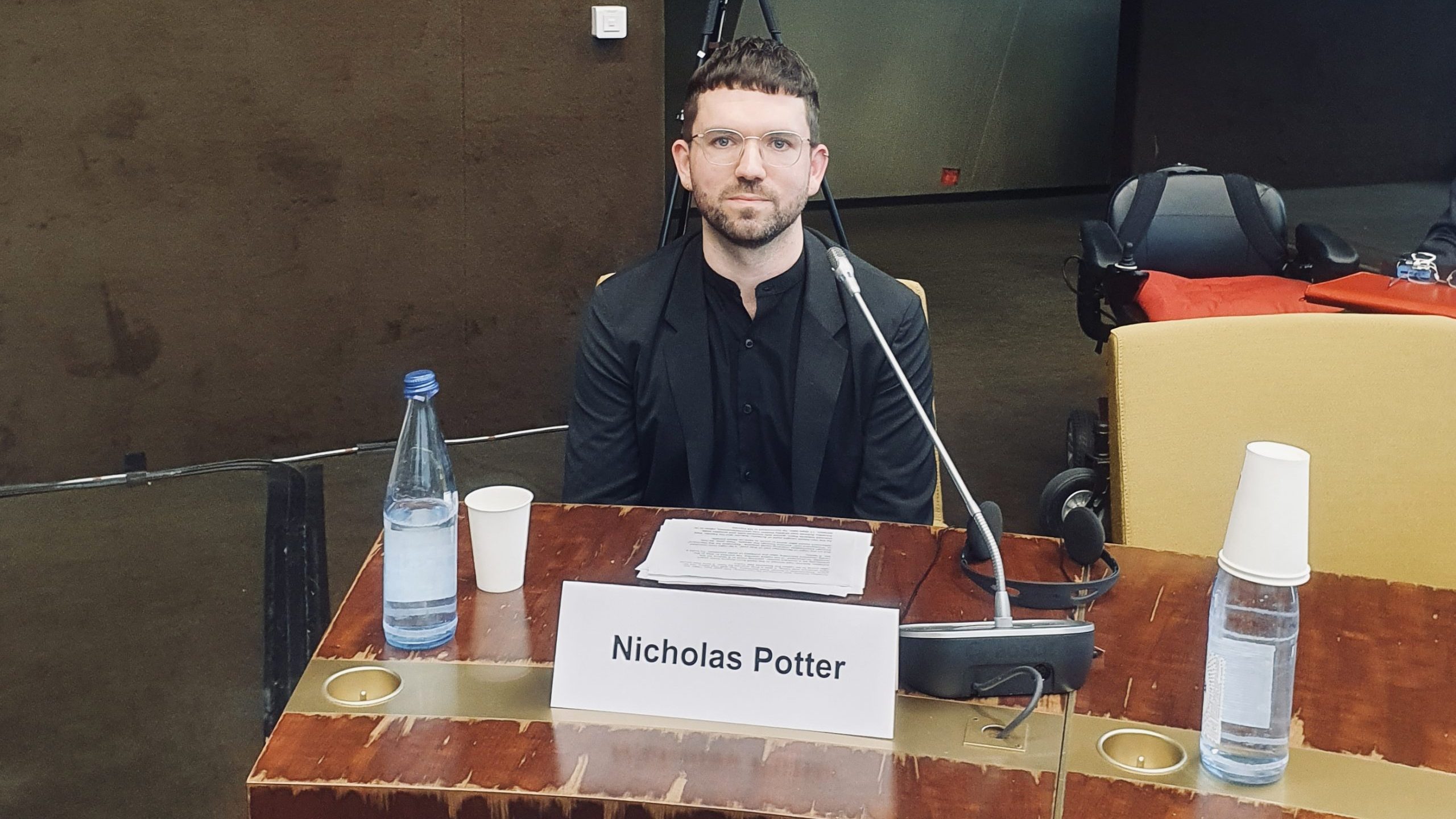On May 21, 2025, police raided 13 homes in Mecklenburg-Vorpommern, Brandenburg, Hesse, Saxony, and Thuringia, targeting suspected right-wing terrorists organized under the name “Last Line of Defense”. Five individuals were arrested, and arrest warrants were issued against them.
Ben-Maxim H., Lenny M., Benjamin H., Jerome M., and Jason R. are part of a new far-right youth culture that idolizes right-wing terrorists such as Anders Breivik and Beate Zschäpe. Empowered, unrestrained, and emboldened by electoral gains of the AfD, the group claims to be defending the “German Nation.” The members of the “Last Line of Defense” are notably young and extremely violent. The group has existed at least since April 2024—at the time of its founding, all five arrested were still minors.
“Their goal is to bring about the collapse of the democratic system in the Federal Republic of Germany through acts of violence, mainly targeting migrants and political opponents,” stated the Federal Prosecutor’s Office.
Attacks against so-called “Enemies of the People”
To achieve their goal, the members of the “Last Line of Defense” have not shied away from brutal violence. In Altdöbern, on the night of October 23, 2024, two accused 15-year-olds set fire to a cultural center they had mistakenly believed to be a leftist meeting point. In Schmölln, in January 2025, they smashed the windows of an occupied refugee shelter and attempted to throw firebombs made of pyrotechnics into the building. Swastikas and racist slogans were left at the scene. In Senftenberg, a bombing attack on an occupied refugee shelter was narrowly prevented in February 2025 thanks to a tip from a journalist.
They are also accused of planning further arson and bombing attacks on asylum centers and institutions of self-declared “political enemies.” These acts are intended to send messages—messages of intimidation and fear. In short: right-wing terrorism.
How violent right-wing extremism is becoming a trendy youth culture again
Far-right attacks are on the rise at a rapid pace. Targets increasingly include youth centers, Pride parades, and the democratic civil society that protests against right-wing extremism. Young people are not just more frequently among the victims, but also among the perpetrators.
In July 2024, a group in Berlin on their way to an anti-fascist protest was brutally attacked by 15 masked neo-Nazis wielding batons and pepper spray. The victims were between 15 and 39 years old, with many of the attackers notably young. Just weeks later, police detained a group of 28 seemingly violent individuals equipped with mouthguards and leather gloves—apparently planning attacks on a Pride parade. Half of those taken into custody were minors.
“You often see these ‘kid Nazis’ around here—teenagers wearing combat boots, bomber jackets, and shaved heads. It’s been really noticeable lately,” said a local resident in Grevesmühlen, where a far-right assault on two Ghanaian girls occurred in June 2024.
Video footage of the attack confirms the impression: the perpetrators dress in the familiar style and evoke the neo-Nazi scene of the 1990s. A youth worker from Grevesmühlen commented:
“It feels like a fashion trend, like it’s becoming a youth culture—just like hip-hop, rap, or punk used to be.”
Being far-right as mainstream—the last stop in a search for identity: “Racist,” is how one teenager from Grevesmühlen even describes himself.
Why it works
The example of Grevesmühlen shows the dilemma facing young people: they want to belong—and the best-connected peer group in their environment is right-wing extremist.
Searching for belonging and driven by uncertainty about who they are and who they want to be, these youths come across groups with strong opinions and simple answers. Strength and a sense of community act as a magnet.
The rules are simple: greetings include Nazi slogans like “Sieg Heil” or “Heil Hitler,” maybe even a Nazi salute—then they rant together about and against “foreigners,” as one young right-wing extremist from Grevesmühlen reported.
Right-wing groups such as the so-called “Last Line of Defense” offer these teenagers orientation and a sense of identity. They operate with clear enemy images—targeting migrants, politicians, leftists, or queer people. These groups foster a strong sense of community and incite violent behavior. Within their structures, violence is celebrated as a heroic act, while personal responsibility dissolves in right-wing ideology.
Far-right online mobilization
The far-right scene operates online very openly—and yet largely unnoticed. Profiles appear unashamed: sometimes using far-right codes and symbols (so-called “dog whistles”) that only insiders understand, and sometimes completely overt.
This form of digital hate mobilization is not driven by lone actors. It involves networks, fake accounts from groups such as the Identitarian Movement, the far-right fringe party The Third Way, or the Young Alternative—all networking online. With their newly founded youth wing “German Youth Forward,” The Third Way alone gained more than 2,000 followers on Instagram within just a few posts.
What can be done?
The key remains political and democracy-strengthening education. But it needs more funding and resources. (Youth) social work must be expanded, including digital outreach programs like digital streetwork. Because youth social work is democracy work.
Non-right-wing youth need safe spaces where they can meet and connect. The few youth clubs that still exist urgently need better protection. This also means that security agencies must take right-wing strategies seriously and stop dismissing them as just “youth scuffles.”



